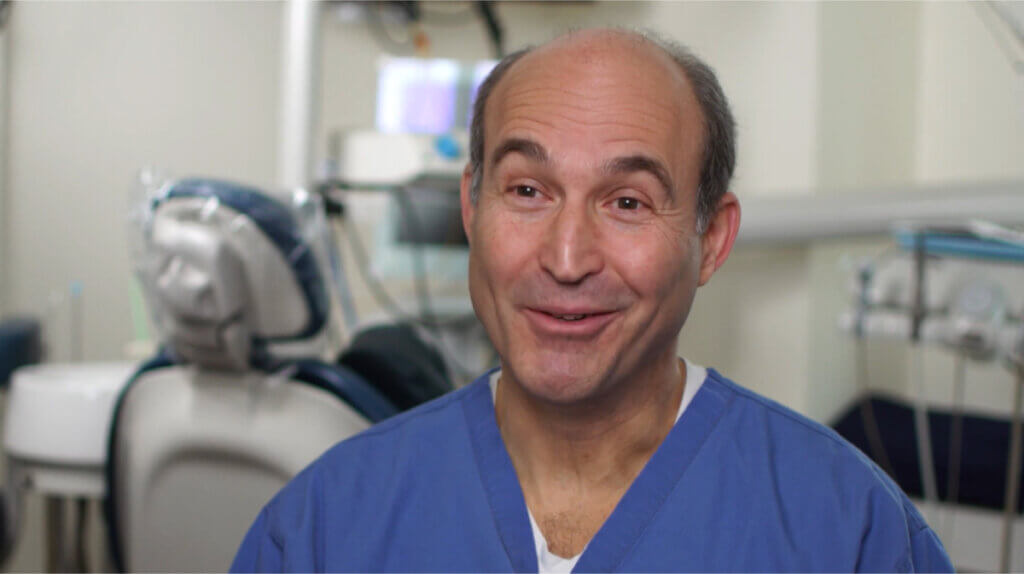Restore Your Smile with Bone Grafting at NYC Periodontics & Implant Dentistry
Bone grafting is a highly effective treatment that plays a crucial role in improving dental health, particularly when preparing for dental implants or correcting bone loss. At NYC Periodontics & Implant Dentistry, we specialize in bone grafting treatments that help restore the foundation of your smile and support your long-term dental health. If you’re considering bone grafting to address issues such as jawbone loss or the need for dental implants, or if you have a missing tooth and are exploring options like single tooth implants, understanding the benefits of this procedure can help guide your decision.
In this blog, we’ll explore the main benefits of bone grafting treatment and how it can improve your overall dental health. If you’re in need of bone grafting treatment, contact our New York City dental practice today at 212-702-9088 to schedule a consultation with Dr. Scott Kissel and our talented team. We also proudly serve patients coming from New Jersey, Staten Island, and Long Island.

What Is Bone Grafting?
Bone grafting is an oral surgical procedure that involves adding bone material to an area in the jaw where bone has been lost due to factors such as periodontal disease, tooth loss, or trauma. The purpose of bone grafting is to restore lost bone and create a solid foundation for future dental procedures, such as dental implants. The bone material used in the procedure may come from your own body, a donor, or synthetic sources, depending on your needs. Synthetic bone grafts are an option in bone grafting procedures, offering benefits such as osteoconduction and hardness.
Bone marrow aspirate can be used in conjunction with various synthetic materials, such as hydrogel-hydroxyapatite composites and ceramics, to enhance biological activity. This combination can lead to improved outcomes in bone mineral density and osteoblast proliferation.
Definition of Bone Grafting
Bone grafting is a surgical procedure that involves transplanting bone tissue from one part of the body to another, or using synthetic or donor bone, to repair or rebuild damaged or missing bones. This procedure is often used in dental implant surgery to provide a stable base for the implant, but it can also be used to repair bones in other parts of the body. During the procedure, the graft material is carefully placed in the area where bone is needed, and over time, it fuses with the existing bone, promoting new bone growth and providing a solid foundation for future dental work.
Who Needs a Bone Graft?
A bone graft may be necessary for individuals who have experienced bone loss due to injury, disease, or congenital conditions. This can include people who have:
- Experienced tooth loss and require dental implants
- Suffered from periodontal disease, which can cause bone loss in the jaw
- Been involved in an accident that has resulted in bone damage
- Been born with a congenital condition that affects the development of their bones
- Undergone surgery that has resulted in bone loss
Bone grafting helps restore the lost bone, providing the necessary support for dental implants and improving overall oral health.
Candidates for Bone Grafting
Not everyone is a candidate for bone grafting. The ideal candidate for bone grafting is someone who:
- Is in good overall health
- Has sufficient bone density to support the graft
- Is willing and able to undergo the necessary surgical procedures
- Has realistic expectations about the outcome of the procedure
Your dentist or periodontist will evaluate your specific situation to determine if bone grafting is the right option for you, ensuring the best possible outcome for your oral health.
Types of Bone Grafts
Autograft
This type of graft uses bone taken from your own body, often from another part of the jaw or body. It’s highly biocompatible, meaning it’s well-accepted by your body, leading to faster healing times.
Allograft
An allograft uses bone tissue taken from a donor, typically a cadaver. It’s a safe and effective alternative to autografts and provides a stable base for bone regeneration.
Xenograft
A xenograft uses bone material from another species, such as cows, and is processed to ensure it’s safe and effective for human use.
Alloplast
Synthetic bone grafts made from biocompatible materials can also be used. These are often used in specific situations where other options may not be available.
Why Should You Consider Bone Grafting?
1. Supports Dental Implants
When there is insufficient bone in your jaw due to tooth loss or disease, dental implants may not have enough support. Bone grafting restores lost bone, creating a solid foundation for the placement of dental implants, helping to ensure their long-term success.
Why It’s Important: Dental implants are a popular, long-lasting solution for missing teeth, and bone grafting ensures that your jaw has the proper support for these implants, preventing complications and ensuring they stay in place for years.
2. Enhances Jawbone Health
Bone grafting can also prevent further bone loss in the jaw. After a tooth is lost or extracted, the surrounding bone can deteriorate. Bone grafting helps maintain the volume and strength of the jawbone, preventing additional bone loss and preserving the structure of your face.
Why It’s Important: Maintaining jawbone health is critical for your oral health, and bone grafting offers a proactive solution that prevents further deterioration, which can affect your ability to chew and speak properly.
3. Improves Facial Aesthetics
If you’ve experienced significant bone loss, the shape of your face may change, leading to a sunken appearance. Bone grafting restores the natural contours of the jaw and face, improving your appearance and boosting your confidence.
Why It’s Important: A healthy jawbone supports the skin and muscles of your face, so restoring bone through grafting can improve your facial appearance and prevent an aged, hollowed-out look.
4. Prevents Bite Problems
Bone loss can alter the alignment of your teeth and lead to bite problems. By restoring bone, bone grafting helps ensure that your teeth remain in proper alignment and function as they should, preventing misalignment and the need for more extensive treatments later.
Why It’s Important: Keeping your teeth and bite properly aligned improves your ability to chew, speak, and maintain optimal oral function.
5. Restores Your Ability to Chew and Speak Properly
For patients who have experienced severe bone loss, chewing and speaking may become challenging. Bone grafting can restore the necessary bone structure to your jaw, improving your ability to eat a variety of foods and speak clearly.
Why It’s Important: Proper bone structure in the jaw is vital for everyday functions such as chewing and speaking. Bone grafting helps you return to normal, functional abilities with ease.
Is Bone Grafting Right for You?
Bone grafting is a safe and effective treatment, but it’s not for everyone. Your dentist or periodontist will evaluate your oral health and determine if bone grafting is necessary to achieve your goals. Factors such as the amount of bone loss, the condition of your teeth and gums, and your overall health will play a role in determining if bone grafting is the right solution.
Why It’s Important: A thorough evaluation ensures that bone grafting is the best treatment for your needs, leading to the best outcomes for your oral health.
The Bone Grafting Procedure
The bone grafting procedure typically involves a small incision in the gums to access the jawbone. The grafting material is placed in the areas where bone loss has occurred, and the gums are sutured back into place. The graft will gradually fuse with the existing bone over time, a process that may take several months.
Bone grafting is a relatively straightforward procedure, but it requires healing time and patience. Dr. Scott Kissel and his team at NYC Periodontics & Implant Dentistry provide excellent care to ensure the best outcome for your treatment.
Risks and Complications
As with any surgical procedure, there are risks and complications associated with bone grafting. These can include:
- Infection
- Nerve damage
- Blood vessel damage
- Graft rejection
- Failure of the graft to integrate with surrounding bone tissue
- Adverse reactions to anesthesia
It’s important to discuss these potential risks with your healthcare provider and follow all pre- and post-operative instructions to minimize complications and ensure successful bone healing.
Aftercare and Recovery
After the bone grafting procedure, it’s important to follow your dentist’s aftercare instructions to ensure proper healing. You may be prescribed medication to manage any discomfort, and it’s essential to maintain good oral hygiene and attend follow-up appointments for monitoring the healing process.
Proper aftercare is crucial to ensure that your bone graft heals well and that the bone successfully integrates with your jaw, paving the way for future treatments such as dental implants.
Bone Tissue Regeneration
Bone tissue regeneration is a critical aspect of bone grafting. The goal of bone grafting is to stimulate the growth of new bone tissue, which can take several months to a year or more to complete. Factors that can affect bone tissue regeneration include:
- The type of graft material used
- The size and location of the graft
- The overall health of the individual
- The presence of any underlying medical conditions
- The use of growth factors or other medications to enhance healing and tissue regeneration
It’s essential to follow post-operative instructions carefully and attend follow-up appointments with your healthcare provider to ensure proper healing and minimize complications. Successful bone tissue regeneration is key to achieving the desired outcomes of the bone grafting procedure and supporting long-term oral health.
Why Choose Dr. Scott Kissel for Bone Grafting Treatment?
At NYC Periodontics & Implant Dentistry, Dr. Scott Kissel specializes in bone grafting and other advanced periodontal procedures. Our New York City periodontist is committed to providing patients with the best possible care to restore their oral health and smile. Whether you’re preparing for dental implants or need to address bone loss due to periodontal disease, Dr. Kissel has the expertise to guide you through every step of your treatment.
Dr. Kissel’s advanced training and experience in bone grafting ensure that you receive the highest quality care and achieve the best possible results.

Schedule Your Consultation Today in New York City
If you’re considering bone grafting to restore your smile and improve your oral health, Dr. Scott Kissel and the team at NYC Periodontics & Implant Dentistry are here to help. To learn more about bone grafting treatment and how it can benefit you, contact our New York City dental office today at 212-702-9088 to schedule a consultation. We also proudly serve patients coming from New Jersey, Staten Island, and Long Island.